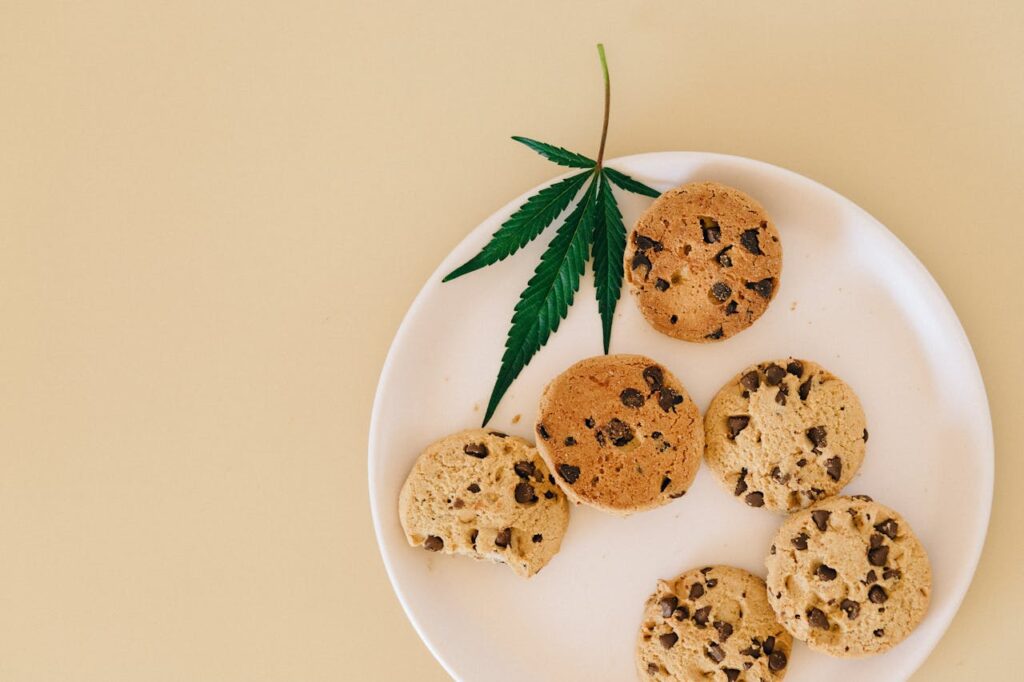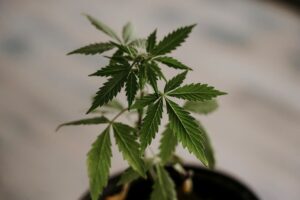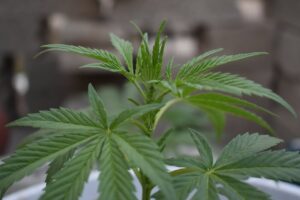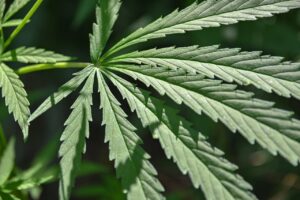Table of Contents
ToggleKey Takeaways
- Cannabis micro-dosing involves consuming small amounts of cannabis to achieve therapeutic benefits without experiencing the psychoactive “high” associated with higher doses. It does this by acting on the human body’s endocannabinoid system to help balance mood, pain response, and many other bodily functions.
- Compared to standard dosing, micro-dosing minimizes the risk of adverse effects and allows users to perform daily activities without impairment. This contributes to its attractiveness as a potential option for people looking to manage their symptoms while not interfering with their day-to-day functioning.
- Micro-dosing is best achieved through sub-perceptual dosing. The key here is that the effects should be subtle, but still beneficial. Those doses usually fall between 1 and 5 milligrams of THC or CBD, but it all depends on the consumer’s tolerance level and what effects they’re trying to achieve.
- How you take them—like smoking or vaping compared to edibles or sublingual tinctures—is an important factor. It has a tremendous impact on the bioavailability and effectiveness of micro-dosing in general. Screening methodsSelecting an appropriate method is key to getting reproducible results.
- When cannabinoids like THC and CBD work together therapeutically, that’s the entourage effect. Choosing cannabis strains according to cannabinoid and terpene profiles is key to customizing your micro-dosing experience to meet your unique needs.
- Beginning at a low dose, then slowly increasing over time while monitoring effects is essential to discovering that perfect microdose. Tools such as dosing syringes and digital scales can help achieve accuracy and consistency in micro-dosing practices.
Micro-dosing cannabis typically refers to consuming smaller, controlled amounts of the plant to derive therapeutic benefits while avoiding overwhelming psychoactive effects. Usually, these small, sub-perceptual doses are 1-5mg of THC or CBD, depending on the desired effects and the individual’s tolerance.
Research indicates that micro-dosing positively stimulates the endocannabinoid system. This activation helps to restore homeostasis and overall health through the stimulation of receptors throughout the central nervous system and peripheral system.
This approach allows for better treatment of anxiety, pain, and inflammation, without negative side effects that larger doses can cause. Studies are beginning to show its efficacy in improving concentration and emotional well-being through the targeted administration of cannabinoids in very specific, minuscule amounts.
Learning more about the science behind micro-dosing can help explain how it supports health and wellness. In this guide, we’ll take a deep dive into how micro-dosing works, the potential benefits, and how to incorporate small doses of cannabis into your routine.
What Is Cannabis Micro-Dosing?
Cannabis micro-dosing means consuming very small doses of cannabis. This makes it possible to experience its therapeutic benefits and effects without being distracted by the high that you would get with larger doses. This method appeals to people seeking alternative relief from greater chronic pain, anxiety, or inflammation.
It has become essential for them to keep all of their cognitive and physical faculties. Central to understanding micro-dosing is THC, or delta-9-tetrahydrocannabinol, the compound that creates the “high” association with cannabis. At these lower doses, usually under 5 milligrams, and frequently around 2.5 milligrams, THC works with the body’s endocannabinoid system.
This interaction promotes homeostasis and wellness with no detectable level of impairment or high. The endocannabinoid system is responsible for maintaining homeostasis, or the regulation of important physiological processes including mood, appetite, and pain.
Micro-dosing takes advantage of the system by faintly stimulating its receptors, encouraging desirable effects without bombarding the body. This is in contrast to traditional cannabis use in which larger doses often result in marked psychoactivity, sometimes preventing individuals from fulfilling their daily obligations.
Standard Dosing VS. Micro-Dosing
Micro-dosing isn’t like regular cannabis usage. Many standard doses are 10 or even 20 milligrams of THC, causing much stronger effects. Conversely, these greater doses heighten the risks of adverse effects, including impaired cognitive performance and travel anxiety-induced drops in blood pressure.
Micro-dosing allows for a more manageable experience. Users can experience the benefits of cannabis without the sedative effects, allowing them to remain sharp and productive during the day. Research has demonstrated that doses as low as 0.5 mg can provide meaningful reductions in pain.
This approach is perfect for therapeutic applications, as it does not interfere with one’s lifestyle.
How Does Micro-Dosing Cannabis Work?
Micro-dosing cannabis works by precisely targeting the body’s complex endocannabinoid systems, providing effective symptom relief, without inducing overwhelming psychoactive effects. Until now, this line of research has largely concentrated on how cannabis products can positively impact biology—in particular, by utilizing the body’s endocannabinoid system.
It leverages cannabinoids, terpenes, and pharmacokinetics to co-create customized therapeutic results.
Endocannabinoid System Interaction
The endocannabinoid system (ECS) is now recognized as a master regulator of the body’s homeostasis. THC, the main psychoactive cannabinoid, attaches to CB1 receptors in the brain and CB2 receptors in the immune system.
This activation is the primary way the endocannabinoid system regulates mood, pain, appetite, and other functions. A microdose, typically 1/5 to 1/20 of a recreational dose, subtly activates these receptors, modulating pain and mood without inducing intoxication.
For example, 0.5 mg THC was shown in a study to reduce chronic pain intensity, with minimal side effects, demonstrating the ECS’s therapeutic potential.
Cannabinoids And Terpenes Influence
Cannabinoids such as THC and CBD play nicely with terpenes, aromatic compounds that give cannabis its smell and taste, to boost therapeutic effects. This synerg, sometimes referred to as the entourage effect, further underscores how crucial your strain selection is.
As an example, myrcene-heavy strains might induce relaxation, whereas those containing limonene might uplift a user’s mood. A tincture that has 5 mg of THC per mL will allow you the best control for micro-dosing.
The study sheds light on the need for remarkable, very specific cannabinoid and terpene profiles.
Low-Dose Activation Mechanisms
Low doses of THC enhance the brain pathways associated with improved cognitive functioning and creativity, leaving users unimpaired This threshold effect provides the sought-after therapeutic benefit — whether it’s less anxiety or more focus — without resulting in overstimulation.
Dopamine and other neurotransmitter systems stand to be helped as well, leading to improved mental wellness.
Pharmacokinetics Of Micro-Dosing
Micro-dosing’s pharmacokinetics refer to THC absorption, distribution, metabolism, and excretion. For example, smoked cannabis has a 30% bioavailability, with effects coming on quickly but wearing off quickly.
Compared with inhalation, which delivers an immediate peak effect, edibles offer more gradual, long-lasting relief. These distinctions emphasize the importance of tailored solutions according to the route of administration.
Potential Benefits Of Cannabis Micro-Dosing
Micro-dosing cannabis primarily involves taking small amounts of tetrahydrocannabinol (THC). This method allows you to benefit from cannabis’ therapeutic effects without feeling the psychoactive “high” associated with larger doses. This practice has recently seen growing interest for its efficacy in supporting a sense of overall well-being while keeping people clear-headed and functioning.
Read on as we investigate different ways that cannabis micro-dosing can improve mental and physical health.
Anxiety And Stress Reduction
Research has indicated that low doses of THC can increase relaxation by working with the body’s endocannabinoid system to help modulate stress responses. Unlike high doses that could spark feelings of paranoia, micro-dosing provides a mind soother without the inundating effects.
For example, 63.64% of participants in a micro-dosing study experienced significant reductions in anxiety symptoms with just 0.5 milligrams of THC. Neurobiology supports this strategy. Even at low levels of THC, microdoses may augment the activity in the amygdala, the brain area that plays a key role in fear and stress response.
As far as what people experience, testimonials from micro-dosing users tend to describe enhanced social engagement and life feeling easier.
Productivity And Focus Enhancement
Micro-dosing has been found to increase productivity, with users reporting enhanced attentiveness and inspiration. Anecdotally, many users find that their task performance is enhanced, especially on tasks that need prolonged focus or creative cognition.
For instance, THC micro-dosing has been linked to enhanced cognitive performance in older adults, as noted in a 2018 study. Creative professionals and students of all ages have discovered this technique to be useful for brainstorming or problem-solving sessions.
Pain Relief Applications
It’s well established that micro-dosing THC can be just as effective in managing chronic pain and inflammation. Available studies indicate that the intensity of pain is reduced by as much as 69.57%, and all this is done at a low inhaled dose of cannabis.
This cautious approach mitigates cognitive impairment effects, allowing users to engage in everyday responsibilities with confidence.
THC VS. CBD In Micro-Dosing
When micro-dosing cannabis, knowing the unique effects of THC (tetrahydrocannabinol) and CBD (cannabidiol) is important. Both cannabinoids equally interact with the body’s endocannabinoid system, but they create very different effects. THC is psychoactive and binds directly to CB1 receptors, while CBD has non-psychoactive properties and influences the system indirectly, often modulating THC’s effects.
Micro-dosing consists of taking small, controlled doses of these cannabinoids to gain therapeutic effects while minimizing or eliminating the unwanted effects of intoxication.
THC Micro-Dosing Effects
Micro-dosing THC can lead to a gentle sense of calm, elevated mood, and increased creative flow. At high doses, THC can produce feelings of euphoria or impairment. Lower doses prioritize the therapeutic relief levels that will help you improve while keeping you productive.
Many people report feeling more focused and relaxed after taking only 1-2 mg of THC. This dose is well below the amounts usually associated with recreational consumption. The subjective experiences are just as varied, with some users reporting a subtle mood-boosting sensation and others focusing on the lowered stress response.
Micro-dosing is not a blanket solution. The THC content in cannabis can vary substantially and only about 30% of it is bioavailable once you ingest it.
CBD Micro-Dosing Benefits
CBD provides a host of therapeutic benefits, in particular for the treatment of anxiety, inflammation, and chronic pain. Its non-psychoactive nature is attractive to those looking for relief without a high.
Significantly, studies specifically emphasize CBD’s anti-epileptic effects as a consequence of its function in preventing endocannabinoid breakdown. Users have consistently stated they feel a sense of calmness and less physical discomfort kicking in with a range of 5 to 10 milligrams of CBD.
CBD’s anxiolytic effects can be helpful for those who experience THC as anxiety-provoking.
Combining THC And CBD
When used together, THC and CBD work synergistically to improve micro-dosing outcomes. Products with an 8:1 THC: CBD ratio, for example, suggest that THC may address specific symptoms while CBD mitigates potential side effects like anxiety.
This unique pairing provides all cannabis users the ability to customize their doses for more harmonious effects, like effective pain relief without the high. Popular micro-dosing options include tinctures and capsules that combine both cannabinoids.

Effective Micro-Dosing Methods
Micro-dosing marijuana generally consists of consuming a small, controlled dose of the plant to receive its therapeutic effects without overwhelming psychoactive effects. Understanding how to choose the best method for micro-dosing THC is key to customizing the experience to each person’s unique needs, wishes, and intentions, as each method provides different health benefits.
Inhalation Techniques
Inhalation methods, such as vaping or smoking, are preferred due to their rapid onset of action, usually within minutes. This fast-acting response makes psychedelics especially effective in addressing acute symptoms like pain or anxiety. Precision of dosage and intent is very important.
Due to varying puff size and inhalation time, it can often be challenging to achieve a consistent dose. To microdose effectively, look for a vaporizer with exact temperature settings, which can help you control the amount of THC you take in. Remember that smoked marijuana only has a 30% bioavailability, so dosage will need to be adjusted for that.
Oral Consumption
Edibles, such as gummies, capsules, or baked goods, offer a convenient, discreet, and longer-lasting method for micro-dosing. Ultimately, the delayed-onset period is between 30 minutes and 2 hours. This makes it ideal for treating long-term symptoms such as insomnia or chronic pain.
Start with sub-perceptual doses, typically 1-2 mg. Increase the dose by small amounts every few days, allowing your body to adapt along the way to achieve optimal results. Dosage is more straightforward to calculate with labeled products, providing more reliable consistency.
Sublingual Administration
Tinctures, placed under the tongue, allow for rapid absorption through the mucous membranes, with effects noticeable within 15 to 45 minutes. This method invokes the advantages of rapid onset paired with accurate dosing since tinctures typically have droppers included for easy dosing.
Effective sublingual micro-dosing practices recommend swishing it under your tongue for at least 30 seconds before swallowing.
Choosing The Right Method
Choosing the most effective micro-dosing method will largely come down to your lifestyle, preference, and what you hope to achieve therapeutically. Experimentation is essential—start with low doses, keep each method for a minimum of four days, and adapt as required.
Switching back and forth between different methods can better fine-tune your effective micro-dosing strategy to get the results you want consistently!
Dosage Guidelines For Micro-Dosing
Micro-dosing marijuana involves consuming small doses to experience mild yet effective medicinal benefits without feeling high or stoned. Understanding how cannabis interacts with your body is crucial, and finding your optimal micro-dosing regimen requires patience and experimentation.
Finding Your Optimal Dose
First, you want to start at the low end, generally around 1 to 2.5 milligrams (mg) of THC. This range is commonly suggested for those new to the practice, offering a gentle introduction that lets your body adjust without the hazards of overconsumption.
You may remain at this amount for a few days, noticing an improvement in your mood, focus, and level of pain. Taking gradual steps like increasing by 1 mg every few days can help you find the perfect dosage for you.
Since factors such as one’s body weight, history of cannabis consumption, and tolerance levels are different for everyone, personal experimentation is key. For example, someone with a higher tolerance may need a slightly larger dose to experience the effects. On the other hand, a naïve user might have a profound effect only from 1 mg.
Factors Affecting Dosage
Additionally, how you consume THC matters greatly and plays a huge role in how it’s metabolized. Though edibles take longer to kick in, they can offer lasting relief.
Inhalation provides faster-acting results, while the outcomes only last for a few hours. Health conditions have a significant impact on results. For instance, something like chronic pain might require a very different micro-dosing strategy than someone who has anxiety.
Tools For Precise Dosing
Precision matters— using tools such as digital scales and dosing syringes helps achieve a more precise dose. When working with oils or tinctures, where even a small deviation can skew your findings, calibrated devices are especially useful.
Whatever you choose, be consistent with your measurements so you can better track effects and refine your regimen over time.
Safety And Research
Micro-dosing marijuana is quickly becoming a popular tool among researchers and wellness seekers, as its therapeutic potential becomes more widely understood. Recent research has demonstrated that low doses of THC, such as 5 mg or less, can be highly therapeutic and are associated with fewer side effects. This effective option offers significant pain relief and can be beneficial for medical marijuana patients looking for alternatives to traditional medication.
A recent study published in Nature Medicine showed that micro-dosing THC enhanced cognitive performance among aged mice, completely reversing declines often seen with aging. Through well-designed clinical trials, scientists have shown that micro-dosing works to relieve pain and is clinically comparable to smoking cannabis, making it an appealing choice for those seeking the health benefits of marijuana without the high.
Micro-dosing provides this advantage with less psychoactive impact. The bioavailability of smoked cannabis is, on average, 30%, leading to a much greater effect than desired. By using a micro-dosing regimen, individuals can achieve a more controlled, targeted approach to their well-being benefits.
Current Research Overview
Recent research suggests micro-dosing could be an effective treatment for chronic pain, anxiety, and cognitive functioning. Research has found that a low dose of only 0.5 mg can meaningfully decrease pain. More than 60% of participants achieve at least a 2-point reduction in their pain scores.
Yet, knowledge still exists gaps regarding long-term outcomes, individual variability, and underlying mechanisms behind these effects. Continued research should be prioritized to further fine-tune dosage guidelines and maximize safety recommendations.
Potential Risks And Side Effects
The important point is that individual responses to THC are very different. Factors like individual tolerance levels, genetic predisposition, and use of alcohol at the same time as THC can increase THC’s effects. Safety adverse reactions, while uncommon at low doses, highlight the necessity for close monitoring.
Gradual titration and adherence to recommended starting doses go a long way in reducing these risks.
Addressing Research Gaps
Future research should continue to prioritize engaging with diverse populations to better represent the communities they seek to include. Future randomized controlled trials will be crucial to validate these findings and further explore contradictions.
Increasing this research is necessary for the public to understand and safely use potentially beneficial micro-dosing practices.
Individual Factors And Micro-Dosing
Micro-dosing cannabis is very personal, with effects influenced by individual factors. Given that each individual’s unique physiology, history, and lifestyle can greatly impact their outcomes, this is a huge factor. Honing in on these variables is key to maximizing the positive effects.
Even if most people claim increased attention or greater health with micro-dosing, effects can be wildly different based on these individual elements.
Tolerance And Metabolism
Tolerance to THC, the main psychoactive compound in cannabis, significantly influences how individuals experience micro-dosing marijuana. Regular micro-dosing can lead to increased tolerance, requiring higher dosages over time to achieve the same beneficial effects. This individual variability is crucial, as cannabinoids are metabolized differently by each person.
A faster metabolic rate can enhance the onset of effects but may also shorten their duration. For instance, those with quicker metabolisms could find that the calming effects of micro-dosing THC wear off more rapidly compared to slower metabolizers.
Employing strategies such as tolerance breaks or varying the micro-dosing regimen can effectively manage this tolerance. Adjusting dosages to align with personal tolerance levels can lead to more consistent and positive outcomes for medical marijuana patients.
Genetic Predispositions
Genetics plays a huge role in the body’s reaction to cannabis. Additionally, variations in the genes associated with cannabinoid receptors and metabolism may affect sensitivity and efficacy. For example, some people are faster THC metabolizers, and others are more sensitive to THC, even in small amounts.
Genetic testing, while not required, can offer helpful information for individualizing micro-dosing plans. By taking into consideration their own genetic predispositions, potential microdoses can fine-tune their experiences to maximize overall benefits.
Personalized Approach
A personalized micro-dosing plan takes into account the individual’s lifestyle preferences, health history, and desired outcomes. Much better, measurable effects can be predicted by customizing a regimen like improved mental clarity or over-reactivity being lessened.
Individualized approaches, including starting on lower doses or increasing dosing frequencies, help foster more sustainable and effective micro-dosing practices.
Getting Started With Cannabis Micro-Dosing
Cannabis micro-dosing simply refers to consuming very small amounts of THC or CBD. This strategy allows you to experience subtle therapeutic effects without the less-desirable pronounced psychoactive effects. If you’re just getting started with this journey, emphasize getting set up appropriately.
Follow the process closely to get the most benefit with the least risk.
Consult With Professionals
Start your cannabis micro-dosing journey with the advice of a healthcare professional experienced with cannabis. Education from trained professionals can empower you to find the right starting dose for you and practice cannabis safely and effectively.
A medical professional might suggest taking a lower THC dosage, around 1-2.5 milligrams to start. They may even recommend you start at a dose of 2-5 milligrams of CBD based on your specific goals.
These experts can help you identify any potential adverse interactions with your medications. They can assist you in identifying such dispensaries or brands that mark their THC and CBD levels. Tinctures, for instance, are favored for their accurate dosing and fast absorption when taken sublingually.
Start Low And Go Slow
By starting with a very small amount – maybe beginning as small as 0.5 mg of THC – you can better understand how your body responds. Scoop out in 1 milligram increments, taking a few days to increase as you observe your body’s response.
Letting go of that impatience is key. Pushing the process will often net undesirable effects. Journaling is a great tool to track your mood, sleep, and pain levels so you can see patterns over time.
Yet early studies reveal not just substantial pain relief but cognitive benefits at these low doses, emphasizing the need for careful titration.
Monitor And Adjust
Regular observation helps to make sure the dosage you get is the dosage you require. Further adjustments may be required at times to handle intermittent stress, sleep issues, pain, etc.
Flexibility is key. Your optimal dose may vary from day to day or even throughout the day. Journaling is vital to honing your regimen and staying in the driver’s seat, allowing you to cultivate a healthy, productive micro-dosing experience.
Conclusion
Micro-dosing cannabis is a more practical, intuitive means of understanding its effects without overtaking your system. Small, consistent doses work with microdoses to customize your experience. You may find yourself with less stress, more focus and creativity, or feeling a higher quality of contentment. Consider starting with THC or CBD, or a balance of both. Then fiddle with it based on how you find your body reacting!
As always, everyone’s tolerance and needs are different. Spend some time discovering what dosage works best for you and stick to what you learn. Approach micro-dosing with curiosity and listen to your body. Whether you just want to know more or you’re willing to give it a shot, take it slow and let your experience guide you. It’s your journey—so make it one that serves your goals.
Frequently Asked Questions
1. What Is Cannabis Micro-Dosing?
Cannabis micro-dosing refers to the practice of consuming very small doses of marijuana, allowing users to experience micro-dosing benefits like pain management and reduced anxiety without feeling intoxicated or impaired.
2. How Does Micro-Dosing Cannabis Work?
Micro-dosing works by stimulating the body’s endocannabinoid system with small amounts of THC or CBD, particularly through methods like edible cannabis products. By doing so, it activates receptors spread throughout the brain and body, providing significant pain relief and encouraging a state of balance with minimal to no overpowering psychoactive effects.
3. What Are The Benefits Of Cannabis Micro-Dosing?
Micro-dosing marijuana has allowed our community to discover significant pain relief, reduced anxiety, and improved mood, making it an effective option for those seeking the health benefits of cannabis medicine without the psychoactive effects.
4. Should I Microdose With THC Or CBD?
THC is the most effective cannabinoid for pain management, appetite stimulation, and mood enhancement. Many medical marijuana patients prefer micro-dosing THC in small doses, often combining it with CBD to experience micro-dosing benefits for reduced anxiety and overall relaxation.
5. What Is A Typical Micro-Dosing Cannabis Dose?
A general guideline for micro-dosing THC would be somewhere between 1 and 2.5 mg, allowing for effective dose adjustments. Reassess your micro-dosing experiences after every session. Start low and go slow, fine-tuning to your ideal dose.
6. Is Cannabis Micro-Dosing Safe?
Though micro-dosing is relatively safe for most adults, it’s important to note some caveats. As with any new substance, begin at the lowest effective doses to limit potential adverse effects. Talk to your doctor before micro-dosing, particularly if you are on pharmaceutical medications or have other serious health issues.
7. How Do I Get Started With Cannabis Micro-Dosing?
Take the guesswork out for yourself by starting with legal cannabis products that use science-based THC and CBD labels. Begin with a low dose (1 mg of either THC or CBD) and monitor your response, as effective dosing is essential for micro-dosing THC.
Looking For A Cannabis Dispensary You Can Trust?
For over a decade, we’ve been championing the rights of medical cannabis patients and redefining what it means to inspire wellness. At A Therapeutic Alternative, we’re not just about offering premium cannabis products but about creating a community where health, knowledge, and compassion thrive.
Located in the heart of Midtown Sacramento’s medical district, our dispensary is more than a place to shop—it’s a hub for empowerment and education. Whether you’re a seasoned cannabis enthusiast or exploring its benefits for the first time, our knowledgeable staff is here to guide you every step of the way.
We take pride in offering premium products, including top-notch Indica Vape Cartridges. Our accessibility-focused facilities, featuring an ADA lift and convenient parking options like a lot directly behind us and free street parking, make visiting us seamless. Our commitment to professionalism, compassion, and integrity sets us apart in the industry.
Ready to experience cannabis done differently? Join us at A Therapeutic Alternative and discover how holistic health can transform your life. Visit us today—your path to wellness starts here!




